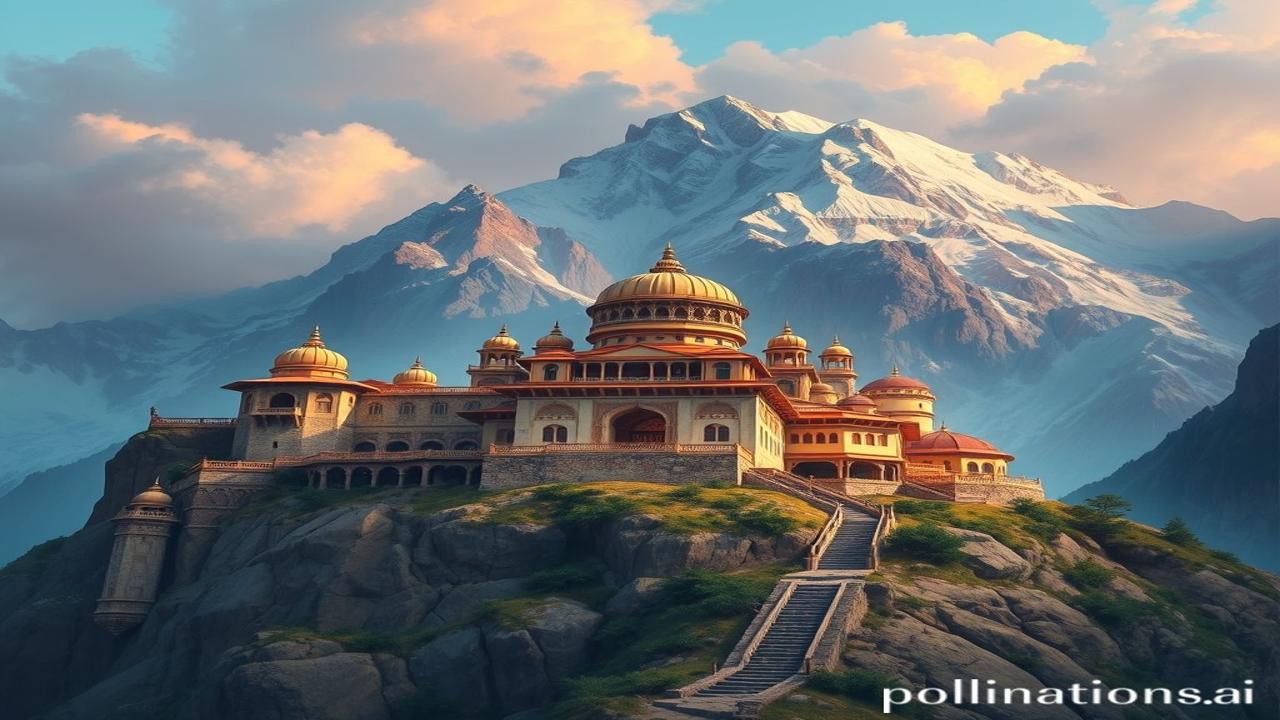हिमालय की गोद में: पत्थरों से बुनी कहानियां – Mountain Architecture of Himalayan Regions
Kabhi socha hai, agar pahaadon ke bhi dil hote toh woh kaise dhadakte? Perhaps with the rumble of a distant avalanche, or the gentle chime of prayer flags fluttering in the wind? हिमालय की वादियों में पत्थरों की जुबानी, सदियों से चली आ रही एक अनोखी कहानी है – the story of mountain architecture. Aaj hum explore karenge yeh अद्भुत कला और समझेंगे कि कैसे प्रकृति और इंसान मिलकर एक ऐसी विरासत बनाते हैं जो वक्त के थपेड़ों को भी झेल जाती है।
हिमालयन आर्किटेक्चर: एक ऐतिहासिक झलक (Himalayan Architecture: A Historical Glimpse)
हिमालयन आर्किटेक्चर सिर्फ ईंट-पत्थर का जोड़ नहीं है, यह उस क्षेत्र के लोगों की संस्कृति, जलवायु और spiritual beliefs का प्रतिबिंब है। This style evolved over centuries, influenced by Tibetan Buddhism, Hinduism, and local traditions. Imagine, from the 7th century onwards, kingdoms like Ladakh, Himachal Pradesh, and Nepal saw the rise of monasteries (gompas), temples, and fortified villages that blended seamlessly with the rugged landscape.
क्यों यह महत्वपूर्ण है? Kyunki yeh architecture is not just about building structures; it’s about building a connection with nature. It’s about creating spaces for spiritual contemplation, community gathering, and resilience in the face of harsh weather. The use of local materials like stone, wood, and clay reflects a deep understanding of sustainability, something that resonates even more powerfully today.
ज़मीनी सच – लोग और जीवन: पहाड़, पत्थर और परिश्रम (Ground Truth – People and Life: Mountains, Stone, and Labour)
Picture this: A harsh winter in Spiti Valley. The wind howls, and snow blankets everything. Inside a monastery, monks huddle around a fire, their chanting echoing through the ancient stone walls. These monasteries, often built on strategic hilltops, served not only as religious centres but also as strongholds against invaders.
Or, let’s go back to the bustling trade routes of Ladakh. Caravan sarai (inns) dotted the landscape, offering shelter to weary travellers and their animals. These structures, built of mud-brick and stone, were more than just resting places; they were melting pots of cultures and ideas.
महारानी यशोवती, the regent of a small Himalayan kingdom in the 12th century, decided to build a temple dedicated to Shiva. She oversaw the construction personally, ensuring that the temple not only reflected the grandeur of the kingdom but also provided a sanctuary for the local community. Artisans from across the Himalayas were invited, bringing with them diverse skills and techniques, creating a truly unique architectural marvel.
धरोहर और पहचान: आज की विरासत (Heritage and Identity: Today’s Legacy)
Aaj, hum in Himalayan architectural wonders ko na sirf tourists spots ki tarah dekhte hain, balki apni sanskritik virasat ke roop mein bhi sambhalte hain. From the intricately carved wooden balconies of Himachal Pradesh to the towering stupas of Ladakh, these structures remind us of our connection to the mountains and the wisdom of our ancestors.
“Bharatiyata” is deeply embedded in this architecture. The respect for nature, the emphasis on community, and the integration of spirituality are all cornerstones of Indian culture. These architectural styles inspire modern architects to design sustainable and culturally sensitive buildings that harmonize with the environment. We see modern hotels and resorts in the Himalayas drawing inspiration from traditional designs, blending seamlessly with the landscape.
मजेदार तथ्य या भ्रम-भंजक: गुम्पाओं का रहस्य (Fun Fact or Myth-Buster: The Mystery of the Gompas)
Log samajhte hain ki gompas sirf meditation karne ki jagah hai… lekin asli sach yeh hai ki they were also centers of learning, medicine, and even astronomy! Many gompas housed vast libraries filled with ancient texts, preserving knowledge that would have otherwise been lost. So, yeh sirf pray karne ki jagah nahi, yeh knowledge ka bhandar bhi tha.
दृश्य और भावनाएं: पत्थरों की कविता (Visual and Emotions: Poetry in Stone)
Imagine standing before the Ki Monastery in Spiti Valley. The air is crisp and cold, carrying the scent of juniper incense. The sun glints off the white-washed walls of the monastery, creating a dazzling contrast against the deep blue sky. The sound of prayer wheels spinning in the wind fills the air, creating a sense of peace and tranquility. The touch of the rough stone walls tells tales of centuries gone by.
अंतिम विचार: शांत घाटी, अनंत विरासत (Closing Thoughts: Silent Valley, Infinite Heritage)
Himalayan architecture is more than just buildings; it’s a living testament to human ingenuity and resilience. It’s a reminder that we are part of something bigger than ourselves, connected to the mountains, to the past, and to each other.
As they say in Sanskrit: “अयं निजः परो वेति गणना लघुचेतसाम्। उदारचरितानां तु वसुधैव कुटुम्बकम्॥” – “This is mine, that is his, is the calculation of the narrow-minded. For those of noble conduct, the whole world is but one family.” This sentiment resonates deeply with the spirit of Himalayan architecture, where every stone, every beam, and every carving tells a story of community, connection, and shared heritage. Let us strive to preserve this precious legacy for generations to come.
